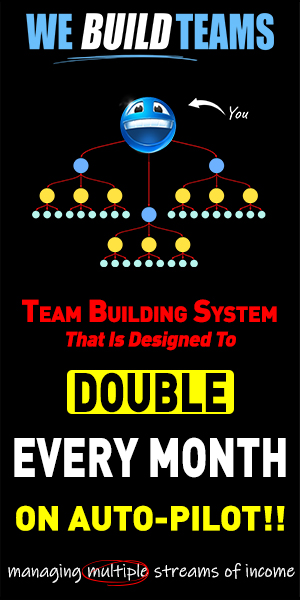🔄 The Evolution of Network Marketing: From Belly-to-Belly to Bots & Beyond
How MLM Has Transformed—and What You Must Do to Stay Relevant in 2025
If you’ve ever been part of a network marketing company, chances are you’ve heard phrases like:
“Talk to everyone within three feet of you.”
“Your list is your goldmine.”
“It’s a numbers game—just show the plan!”
And while these belly-to-belly tactics built some of the biggest empires in MLM history, the world has changed—and so has the way we build.
Today, we live in an era where strangers join your team from across the globe without ever shaking your hand, where leads come from TikTok instead of Tupperware parties, and where AI follow-ups convert better than your uncle with the whiteboard.
Let’s break down how MLM evolved, and what smart network marketers are doing today to build faster, smarter, and simpler.
🕰️ Phase 1: The Old-School Grind (Belly-to-Belly Hustle)
Before the internet, network marketing was 100% personal contact. You made a list of 100 friends and family, set up home meetings, coffee shop appointments, and hotel presentations. You were the messenger, the pitchman, and the follow-up system.
Pros:
✔️ Personal touch built strong relationships
✔️ High-touch recruitment created loyalty
✔️ Duplication through simple scripts
Cons:
❌ Geographically limited
❌ Time-intensive
❌ Emotionally draining (especially if you’re an introvert)
Some still swear by this method, and it can work—but it’s slow and hard to scale.
🌐 Phase 2: Attraction Marketing & Social Media
Then came the internet.
Marketers began using blogs, Facebook groups, YouTube, and later Instagram and TikTok to attract leads by offering value—not pushing products or spamming inboxes.
This was the dawn of Attraction Marketing: lead with helpful content, build trust, and let people come to you.
You no longer had to chase—people came to you because they resonated with your story, your transformation, or your message.
Pros:
✔️ Endless reach across social platforms
✔️ People come to you (pull vs. push)
✔️ Builds a strong personal brand
Cons:
❌ Learning curve for content creation
❌ Algorithm dependence
❌ Still requires consistent manual follow-up
This phase empowered introverts, busy parents, and part-timers to build businesses from home without hosting meetings or stalking friends.
But what if even this could be simplified?
🤖 Phase 3: The AI-Powered Revolution (Where We Are Now)
Enter automation and AI—the next stage of MLM.
In 2025, top network marketers aren’t just creating reels or sending cold DMs…
They’re plugging into AI-driven systems that:
-
Capture leads
-
Build their email list
-
Follow up with tailored messages
-
Promote multiple income streams
-
Train new team members automatically
Platforms like Sparky AI, LeadsLeap, and even ChatGPT are reshaping how teams duplicate, how customers are nurtured, and how businesses are scaled.
Pros:
✔️ Set-it-and-scale-it systems
✔️ 24/7 automation (even while you sleep)
✔️ Duplication that doesn’t rely on YOU
✔️ You can promote multiple income streams from one link
Cons:
❌ Initial setup time
❌ Requires choosing the right tools
❌ Can feel “impersonal” unless customized
The best part? You no longer need to be a tech whiz. These tools are beginner-friendly and come with templates, onboarding videos, and plug-and-play systems.
⚠️ So What Does This Mean for YOU?
If you’re still trying to build your business like it’s 1995, you’ll get left behind.
But if you embrace the tools available in 2025, you can duplicate faster, scale smarter, and protect your time like never before.
Here’s your simple upgrade path:
🔄 From Chasing… to Attracting
Use Facebook, TikTok, Instagram, or even Pinterest to post short, helpful, authentic content about your journey, your products, or your business vision. This builds trust and curiosity.
🤖 From Manual… to Automated
Plug your funnel into an AI platform (like Sparky AI or LeadsLeap). Let it collect leads, send emails, and follow up for you.
💼 From One Income Stream… to Multiple
Use one “hub” link that promotes your primary business plus additional tools, programs, or traffic sources you love. This diversifies your income and boosts your long-term profits.
💡 Final Thoughts: The Future of MLM Is Hybrid
You don’t have to choose between the old way and the new way.
The top earners are doing a hybrid:
-
Building personal brand and presence with short-form content
-
Letting AI and automation handle their back-end
-
Offering value-first connections (not hype and spam)
-
Creating ecosystems of multiple streams that all connect
So whether you’re brand new or have been in MLM for years, the question is:
Are you evolving with the industry… or being left behind?
🚀 Want to Plug Into a Modern MLM System That Works?
I’ve tested the tools, built the systems, and simplified it all. If you’re ready to grow your business the smart way in 2025:
👉 Click Here to Get My Simple Online Income System
(Duplication, automation, and traffic included.)

